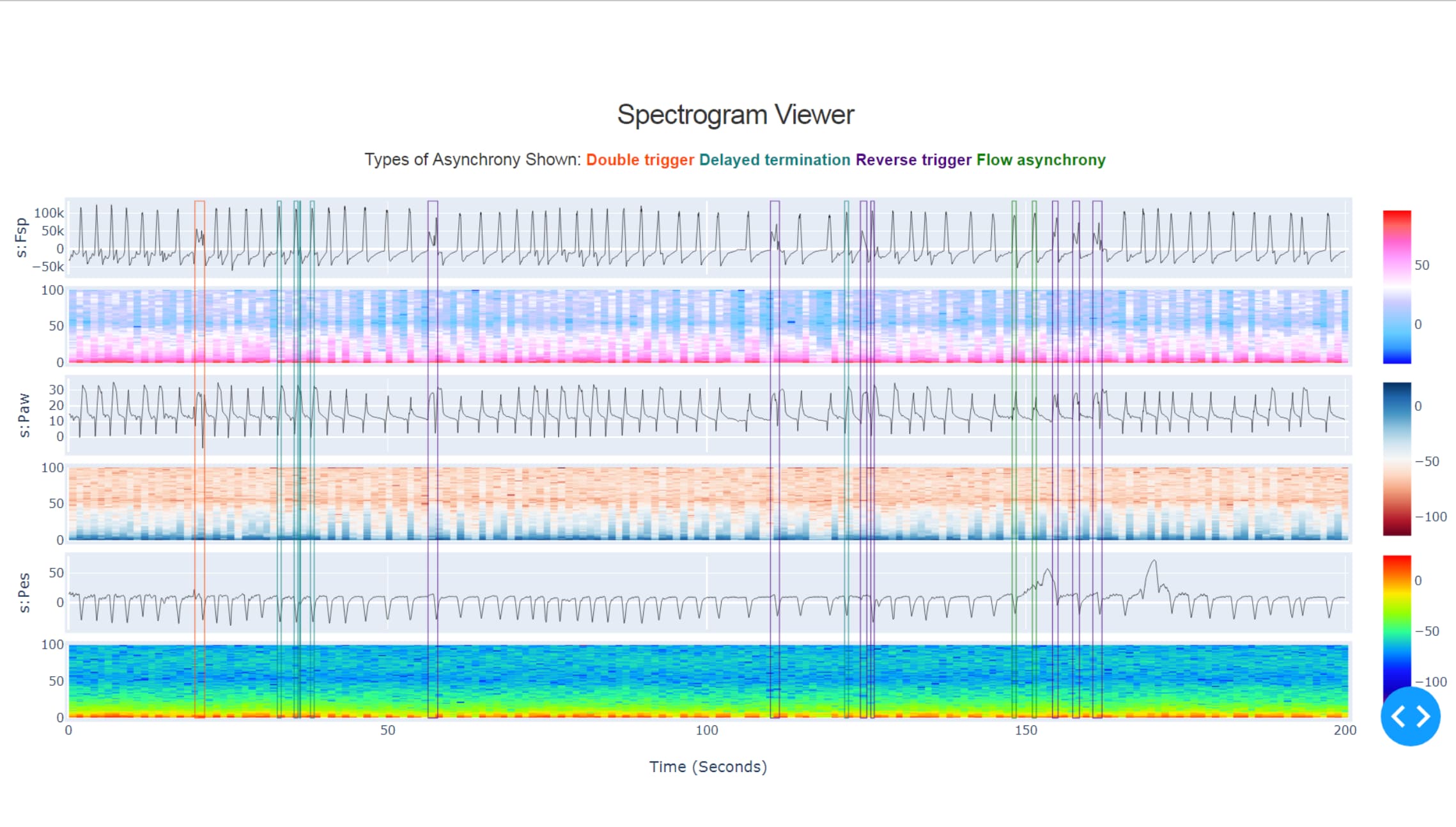Read the paper - DOI: https://doi.org/10.1016/j.bspc.2023.105251
Premise
Patients in ICUs are frequently supported by ventilators. There is increasing awareness of patient-ventilator dyssynchrony (PVD), a mismatch between a patient's respiratory effort versus assistance provided by the ventilator. PVD is believed to be a risk factor for infection, narcotic exposure, lung injury, and adverse neurocognitive effects. One of the most injurious consequences of PVDs are double cycled (DC) breaths—when two breaths are delivered by the ventilator instead of one. This project aimed to detect double cycled breaths using machine learning algorithms trained on patient waveform data collected at the bedside.

Dyssynchrony Viewer - Made with Dash by Plotly (Python)
I created multiple iterations of the dyssynchrony viewer as needed by the data science team. The viewer consisted of spectrograms of the ventilator flow, airway pressure and esophageal manometry as well as labeled PVDs and their respective typing. The user uses the tool to creates the spectrograms with their specified parameters and is also able to scroll to different points of the patient's stay.
Failure Analysis Tool - Made with Dash by Plotly (Python)
The failure analysis tool I created was used to identify when the machine learning model failed to identify a DC breath or mislabeled a normal breath as a DC breath. Highest false positives and false negatives were identified by the tool and combed through by data scientists. This tool helped identify barriers to high model performance and contributed to the resulting high performance of 0.98 AUROC.
